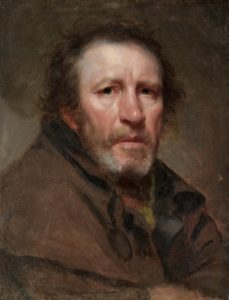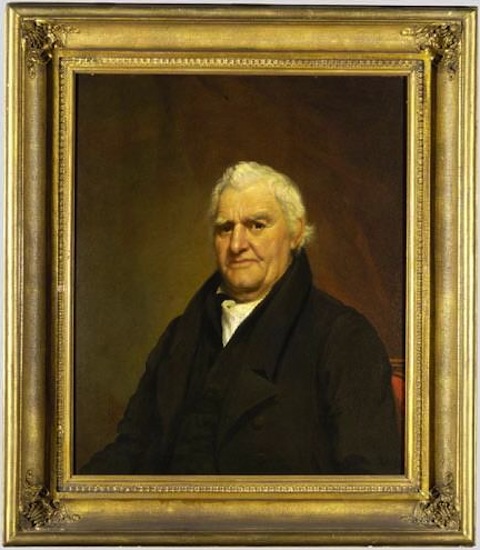
Old Pat, The Independent Beggar painting by Samuel Lovett Waldo – Wikimedia Commons, Cleveland Museum of Art
On April 6, 1783, portrait artist Samuel Lovett Waldo was born in Windham, Connecticut. Desiring a career in art, he sought formal training at age 16 from Reverend Joseph Steward, a portrait painter and museum curator in Hartford, Connecticut. The Connecticut General Assembly later permitted Steward to use the newly completed state capitol’s third floor as a studio and it was there, in 1797, that Waldo opened the Museum of Natural and Other Curiosities which came to include everything from portraits and wax works to a well-preserved two-headed calf.
Waldo studied with Steward for four years before opening his own portrait studio in Hartford. During this time, he became acquainted with a number of influential friends, including painter John Trumbull, but ultimately proved unsuccessful in attaining enough commissions to maintain his portrait business—requiring him to supplement his income by becoming a sign painter.
Samuel Lovett Waldo Heads to London
In 1803, an admirer—Congressman John Rutledge Jr.—invited Waldo to his home in Charleston, South Carolina, where Waldo earned enough money to further his formal studies in London. In 1806, Waldo moved to England with letters of introduction from Trumbull to artists Benjamin West and John Singleton Copley. In London, Waldo lived with Charles Bird King—an artist from Newport, Rhode Island—while studying under West and attending the Royal Academy.

Samuel Lovett Waldo and William Jewett, Nathan Lord, oil on wood – Connecticut Historical Society
Returning to the United States in 1809, Waldo became known for his painting, Old Pat, the Independent Beggar (which Asher Durand engraved) and perhaps his most famous work, his portrait of Andrew Jackson. He also took on an apprentice, William Jewett, an aspiring painter from New London, and they soon entered into a partnership. The portraits they collaborated on carried both of their names.
Samuel Waldo went on to serve as the director of the Academy of Fine Arts and became a founding member of the National Academy before passing away in New York City on February 16, 1861. The Metropolitan Museum of Art, Yale University Art Gallery, and the Connecticut Historical Society hold works by Waldo (and Waldo and Jewett).









